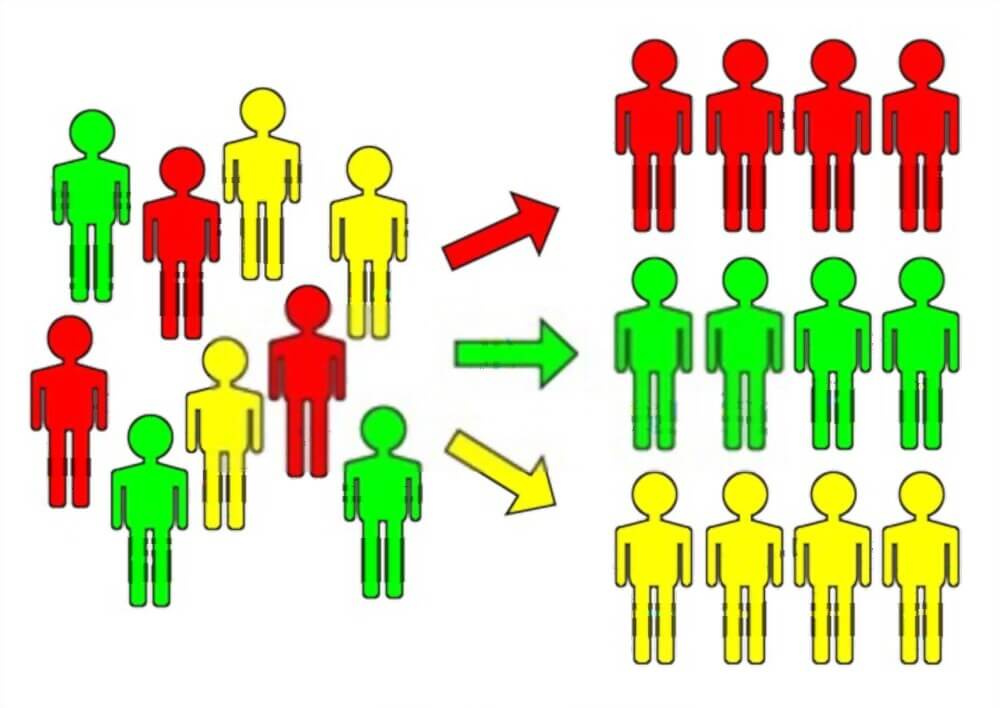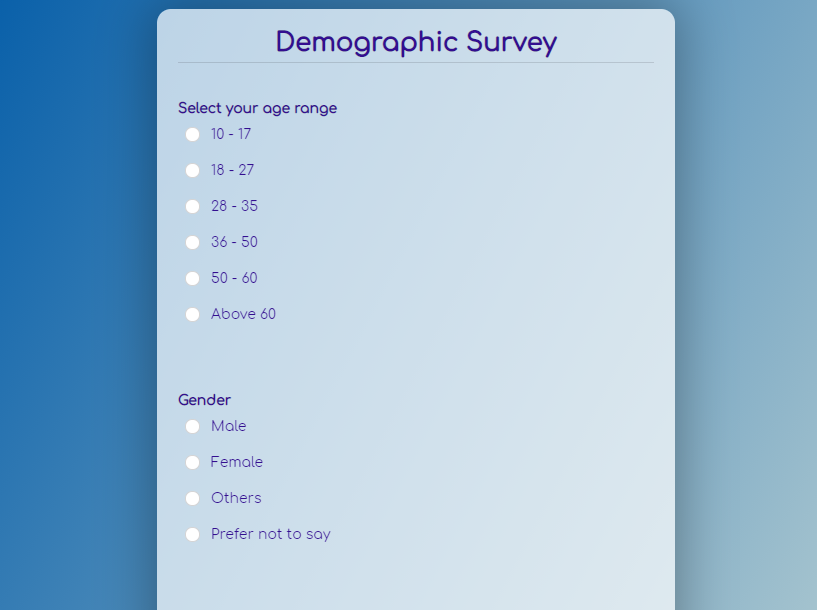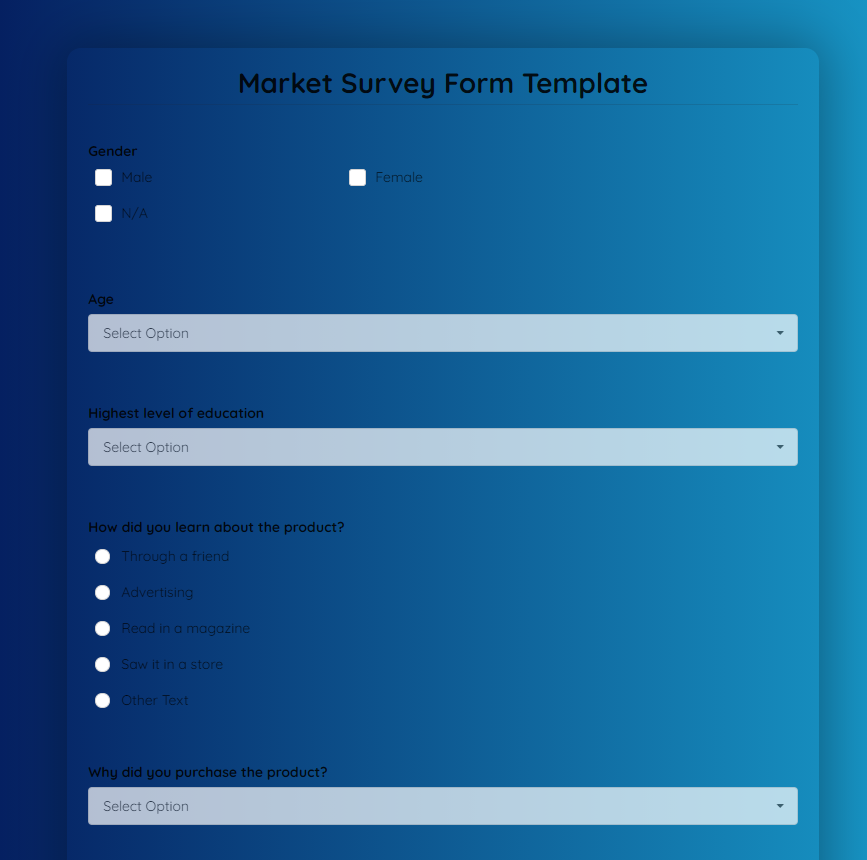Beyond business and marketing, demographic segmentation is a phenomenon that is applicable to different aspects of life. It could be when asked to fill your location during a survey, grouped into a boys and girls group in elementary school, or filling your highest level of education during a job application, but you must have experienced demographic segmentation at some point in your lifetime.
When done correctly, demographic segmentation provides great insights into consumer behavior and the preferences of specific markets. In this article, we will share what a demographic segmentation is and also show you how to carry out a demographic market segmentation using Formplus forms.
Definition of Demographic Segmentation
Demographic segmentation refers to the categorization of the target market based on specific variables like age, education, and gender. It is a type of market segmentation that helps businesses to understand their consumers better and meet their needs, effectively.
Demographic segmentation allows businesses to be more strategic and specific with marketing. A one-fit-all marketing strategy will likely not appeal to every member of your target market because different individuals have different preferences – what appeals to Consumer A may not attract Consumer B.
By breaking your target market into individual categories defined by demographics, organizations can come up with precise marketing campaigns for each group. This helps them to channel resources effectively and boost return on marketing investments.
Why use Demographic Segmentation?
Without demographic segmentation, it is nearly impossible to understand what your customers want. Demographic segmentation helps organizations to categorize their widely varied customer base into smaller groups of individuals and appeal to their specific preferences.
With demographic segmentation, organizations can create personalized brand narratives that easily connect with specific segments of the target market to advertise and sell their product or service. Consumers easily identify with personalized brand narratives and are eager to patronize organizations that reflect this.

Demographic Segmentation Variables
- Age
This is an important factor for market demographic segmentation because consumers' needs and preferences differ in line with their ages. That is, what appeals to individuals in a particular age group may not appeal to members of a different age group.
For instance, young adults typically favor digital marketing campaigns while older adults usually prefer traditional marketing methods. More than marketing strategies, knowing the age distribution of your consumers helps you to create products that appeal to them.
Age segmentation can be done in terms of life cycle stages or generations. Life cycle segmentation includes specific age groups like babies, teenagers, and adults while generation stages include late bloomers, millennials, and generation z.
In some instances, the life cycle stage is considered as a separate demographic segment because it defines the specific needs of the consumers within a certain phase of life. Examples include how toddlers desire certain meals and how adults wear certain clothing.
- Gender
The gender variable is another important demographic factor for market segmentation because individuals identify with different points in the gender spectrum like masculine or feminine, and this primarily affects their choices. Knowing the gender your product appeals to helps you to meet the needs of your consumers effectively.
One's gender identity often influences the general overview of the market, product preferences, and differentiation. For example, men may prefer deodorants with a strong fragrance while women may be more interested in deodorants with a mild and alluring fragrance.

- Income
Income levels also serve as an important demographic variable as it largely determines consumer choices and perception on pricing. Individuals with higher income levels may have an interest in purchasing ostentatious or highly-priced items while individuals with lower income levels may desire cheaper items.
Income levels of the target market also determine the product pricing as you do not wish to price yourself out of business. Organizations that deal with luxury items typically target high-income customers who they know can afford them and they price these items accordingly while organizations that trade in everyday items prioritize affordability.
- Educational Levels
The levels of education of your consumers play an important role in your marketing strategy and product features. In advertising, for example, the educational level of the target market determines the manner and channels you adopt in passing across your message.
Also, the complexity of products and product features is largely determined by the educational level of the target market. Complex product features may not appeal to consumers with low to medium levels of education while extremely simple product features may fail to capture the interest of a highly-educated audience.
- Religion, Race, and Ethnicity
Religion influences the preferences of the target market and so, it is important to know the religious categorization of your target market. Racial and ethnic preferences and sentiments are also reflected in marketing campaigns and advertorials for products and services.
Occupation or Job-Type
Categorizing consumers based on the occupation or job-types allows organizations to create products for specific industries. Occupation segmentation can also help divide groups of people into specific locations such as cities, suburbs, and rural areas and is sometimes combined with income segmentation.
- Family Structure
Societal family structures are important for demographic segmentation. In this sense, societies with large families may desire low-income products that they can purchase in bulk while societies with smaller families and predominantly single people, may favor luxury purchases with flexible spending patterns.
Other demographic segmentation variables include Employment status, location, marital status, and household income.
Examples of Demographic Segmentation in Marketing
- Segmentation by Family: When marketing items like diapers and cereals, organizations typically create advertisements that appeal to the traditional young nuclear family structure – father, mother, and children.
- Segmentation by Location: If your product is restricted to a specific location, this information will reflect on your marketing strategy. For example, in crafting ads, you may use language that is peculiar to that environment.
- Segmentation by Gender: Adverts and market strategies are typically gender-specific. For instance, when creating an advert for a lipstick brand or other makeup products, organizations may create adverts that center women.
Top Form Template for Demographic Segmentation
This demographic survey helps you to understand your consumers better by collecting information about different market demographics such as age, education, marital status, employment status, and the like. You can edit this template in the form builder to suit your organization's needs.

This is a survey that provides more information about the needs of your consumers within a specific market context. An exploratory research survey typically includes demographic questions that help organizations match specific preferences to individual categories like age groups or educational groups.
A market survey is a tool that provides insights into your target market and it is very useful for feasibility study product launching. It contains demographic questions that help you understand who your potential consumers are and their everyday behaviors.

While making it easier for clients to sign up for your yoga class, this form also makes it possible for you to create the best experience for them by collecting useful demographic information. Use the form customization options to tweak the appearance of the form to reflect your brand.
Use this form to collect personal information from individuals applying for the position of a babysitter. The demographic information collected through the form would help you to make the most objective choice and form a bond with the new hire.
Advantages of Demographic Segmentation
A Harvard Business School study suggests that 85% of new product launches fail because of poor market segmentation. Demographic segmentation provides unique insights that prove useful for product launches and service improvements. Other advantages of demographic segmentation are:
- Demographic segmentation improves customer experience
With demographic segmentation, organizations are better informed to create personalized marketing strategies that appeal to specific consumer preferences. This, in turn, improves the overall customer experience and boosts customer loyalty because consumers can easily identify with your brand at different touchpoints.
- Better Product and Service Delivery
By placing your target market into demographic segments, you gain a better understanding of their needs and you are able to improve your product or service accordingly. For instance, you can create different product packages to appeal to the different age groups of your consumers.
- Better Marketing
Demographic segmentation helps you to create actionable marketing strategies that appeal to them. For example, instead of working with generic information, demographic segmentation provides precise direction for advertisement campaigns, marketing messages, and brand awareness; among other things.
- Create Targeted Content
With demographic segmentation, you would know the composition of your target market and you would be able to weave content in a manner that appeals to them. This helps you to refocus your marketing content to highlight the pain points of the different consumer segments.
- Improved Lead Generation
Demographic segmentation is an important tool in lead generation because it helps you to communicate the value of your organization to prospects effectively. When you know who your audience is and what excites them, you're more likely to attract prospects and convert them into paying customers.
- Competitive Advantage
Knowing who your audience is helps you to stand out from the competition. Demographic segmentation gives you a clear understanding of the target market and with this knowledge, you are able to weave specific and exciting narratives that differentiate your brand from the rest.
- A demographic survey is an integral aspect of niche marketing by helping you to identify new opportunities in the market. By breaking your target market into groups, you can identify unexplored business niches.
- Demographic segmentation is easy to carry out and with the right tools, you can conduct this in no time.
How to Conduct Demographic Segmentation
- Identify Your Target Market:
These are the individuals who need your product or service. You can carry out a market research survey in order to gather insights into the needs of the consumers and how your product satisfies these needs.
- Break Your Proposed Target Market into Broad Demographic Segments
For instance, you can broadly categorize the market based on demographic variables like age groups and gender.
An easy way to do this is to create and administer a Formplus demographic survey to help you gather the data for this categorization. You can also collect demographic data from public data available via demographic resources.
- Analyze your Data
After collecting different data sets from your customers, the next thing to do is to analyze the information to reveal specific demographic patterns in your target market. This is even easier if you used Formplus to conduct your demographic research.
Formplus has an analytics dashboard that displays important metrics such as the total number of form submissions and specific data from different form fields. You can also create custom visual reports for your form data using the reports summary tool.
- Break the existing segments into smaller categories using other specific demographic variables like family size and occupation.
- Repeat the above process until you have specific demographic segments for your product.
How to Create Demographic Segmentation Surveys with Formplus
Use this step-by-step guide to create a demographic survey with Formplus and administer it to your target markets.
- Sign in to your Formplus account to access the form builder.
- On your dashboard, click the "create new form" button to begin.
- Drag and drop preferred form fields from the form builder into your form. You can edit the form fields to suit your specific needs.
- Use the form customization options to tweak the overall appearance of your form. You can change the form background, add your organization's logo, and create any custom design.
- Finally, use the form sharing options to share your demographic segmentation survey with your consumers.
Conclusion
It is difficult to achieve business growth without a clear understanding of your customers, which is why demographic segmentation is essential for businesses. To assist you with this, we've shared numerous demographic segmentation examples that can be used to segment your customers.
Formplus makes it easier for you to create demographic segmentation surveys and administer them to your target audience. You can use any of the templates shared in this article or sign up on Formplus to create your own demographic segmentation form.